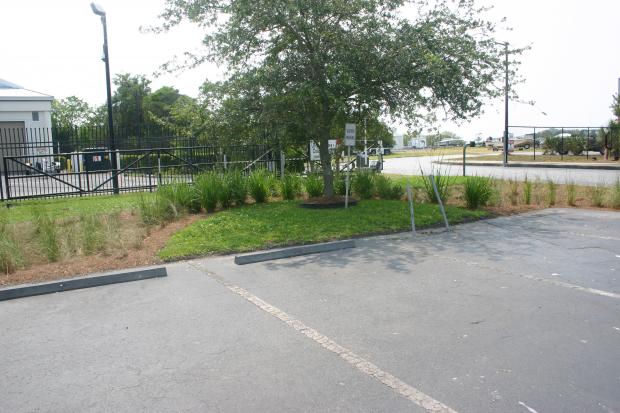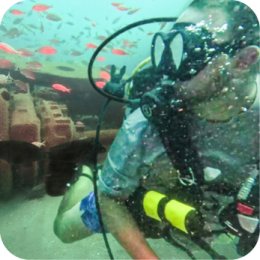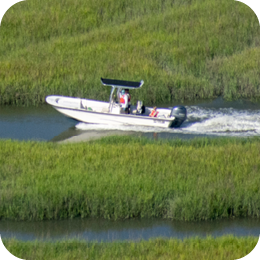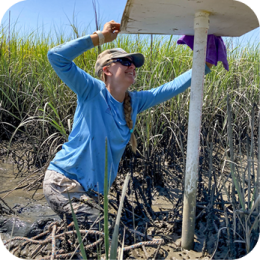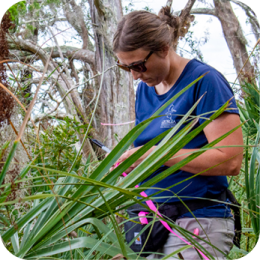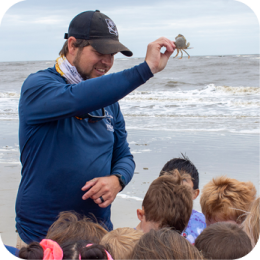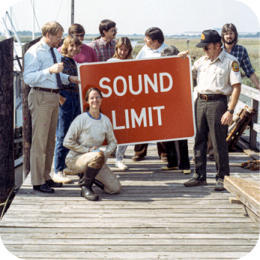Coastal Georgia Low Impact Development (LID) Inventory
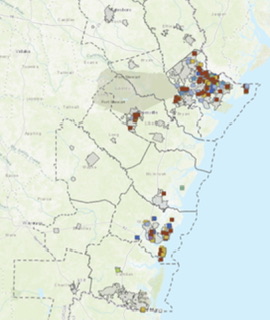 Low Impact Development (LID) and Smart Growth demonstration sites are extremely useful in modeling the applicability of LID techniques as an alternative to traditional stormwater and development standards. As more and more projects utilize these alternatives, we will be better prepared to discuss their utilization in coastal Georgia. Currently there are a variety of projects installed throughout the coastal region. To get a better idea as to what has been implemented throughout the coastal area, the Georgia Coastal Management Program funded an Inventory of Stormwater Low Impact Development (LID) Best Management Practices (BMPs) located in the 11 coastal counties. The practices inventoried included permeable pavement, cisterns, bioswales, bioretention, stormwater wetland, green roof, rain garden and rain barrels located on civic, public, commercial and mixed use properties (not including private residences). The Inventory was conducted using a combination of data collection and field verification with the majority of projects originally assessed in the summer of 2017. Partners also completed a reassessment of existing sites and documentation of additional sites in 2022. This Inventory represents a snapshot in time of each BMP. Photographs and other recorded data reflect the status of the BMP at the time of assessment. Please contact the Georgia Coastal Management Program for more information on the overall project or individual sites (kelly.hill@dnr.ga.gov).
Low Impact Development (LID) and Smart Growth demonstration sites are extremely useful in modeling the applicability of LID techniques as an alternative to traditional stormwater and development standards. As more and more projects utilize these alternatives, we will be better prepared to discuss their utilization in coastal Georgia. Currently there are a variety of projects installed throughout the coastal region. To get a better idea as to what has been implemented throughout the coastal area, the Georgia Coastal Management Program funded an Inventory of Stormwater Low Impact Development (LID) Best Management Practices (BMPs) located in the 11 coastal counties. The practices inventoried included permeable pavement, cisterns, bioswales, bioretention, stormwater wetland, green roof, rain garden and rain barrels located on civic, public, commercial and mixed use properties (not including private residences). The Inventory was conducted using a combination of data collection and field verification with the majority of projects originally assessed in the summer of 2017. Partners also completed a reassessment of existing sites and documentation of additional sites in 2022. This Inventory represents a snapshot in time of each BMP. Photographs and other recorded data reflect the status of the BMP at the time of assessment. Please contact the Georgia Coastal Management Program for more information on the overall project or individual sites (kelly.hill@dnr.ga.gov).
Project Team: Georgia Coastal Management Program (GA DNR Coastal Resources Division); The University of Georgia Marine Extension and Georgia Sea Grant (2022) Goodwyn Mills Cawood, LLC (2022), Ecological Planning Group, LLC (2017), and Center for Watershed Protection (2017).
Access the 2022 LID Inventory online
Download the 2022 Coastal LID Inventory Summary Report
Download the 2022 Coastal LID Inventory Fact Sheet
Download the 2022 Coastal LID Inventory Pilot Cost Study Fact Sheet
Download the 2022 Coastal LID Inventory Infiltration Study Summary Document
Download the 2022 Coastal LID Inventory Infiltration Study Field Guide Report
Demonstration Sites
Below are highlights of several demonstration sites found in the coastal region.
Gascoigne Park Rain Garden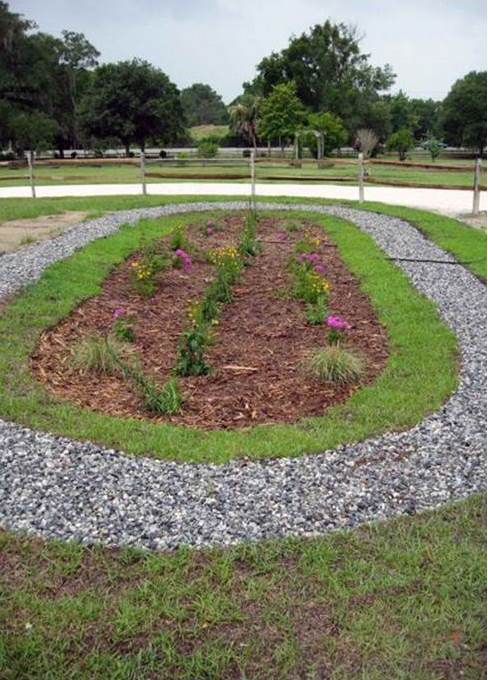
The Gascoigne Park rain garden was installed by Glynn County Public Works as an alternative to piping untreated runoff directly into the Frederica River. Rain Gardens, or bioretention areas, are shallow basins designed to absorb and treat stormwater runoff from nearby impervious surfaces. Above ground it looks like a garden planted with native species, but below the surface are layers of gravel, soil, and mulch designed to absorb runoff and slowly filter it back to the water table. The native plants and soil mixture trap harmful pollutants and help protect our local water quality. This project was a cooperative effort including UGA Cooperative Extension Service, UGA Marine Extension, Coastal GA NEMO Program, Golden Isles Engineering Consultants, Glynn County, NOAA, and GA DNR Coastal Resources Division.
CRD Sustainable Garden Project
This Brunswick, GA project achieved multiple sustainability objectives through incorporating native landscaping with water efficient drip irrigation using captured rainwater. Native plants provide many benefits to a landscaped area. Compared to traditional landscaping, native plantings require very little maintenance because they are accustomed to the local climate and soil conditions. Native plants also provide extremely valuable habitat for many species such as butterflies and songbirds and help protect the biodiversity of the coastal region.
The average American uses 100 gallons of water per day, and more than 50% of that is for outdoor use. Watering gardens uses a considerable amount of water. There are many 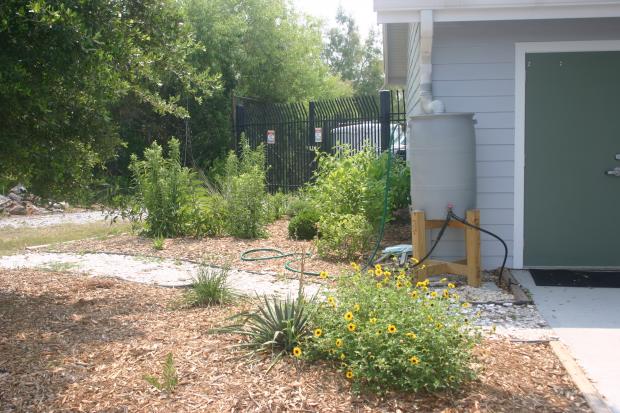
The DNR Coastal Resources Division also installed a bioswale to capture and infiltrate stormwater that was flooding the adjacent parking lot. Land Design Associates, Inc. installed the bioswale by excavating the existing soil at a low point in the landscape to naturally capture the flow of runoff from the parking area. The native grasses planted here will help filter pollutants out of the stormwater and assist in removing some of the water through evapotranspiration.
Golden Isles Career Academy Forebay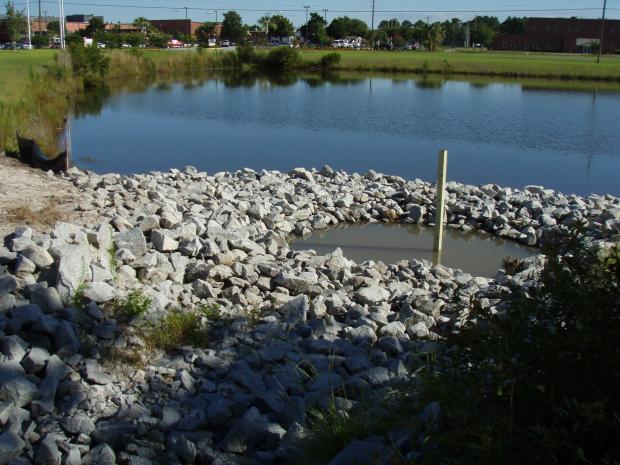
A US Fish and Wildlife Services Grant was awarded to facilitate development of a Low Impact Design for the grounds of the new Golden Isles Career Academy (GICA) in Glynn County, GA. The GICA is a new vocational/technical school addressing the need for skilled service industry workers as the Georgia coast develops.
The forebay of this stormwater pond slows the incoming runoff and gives larger particulates time to settle out, thereby reducing pollution leaving the site and extending the service life of the pond before cleanout is required. Other Low Impact Design techniques for this site are designed for students in the Horticulture and Construction curriculum to install as part of their training, ensuring GICA students graduate with the latest and best practical knowledge. This project was a collaborative effort with UGA Cooperative Extension Service, UGA Marine Extension, Coastal Georgia NEMO Program, Golden Isles Engineering Consultants, NOAA, and GA DNR Coastal Resources Division.
Richmond Hill City Center LEED Building 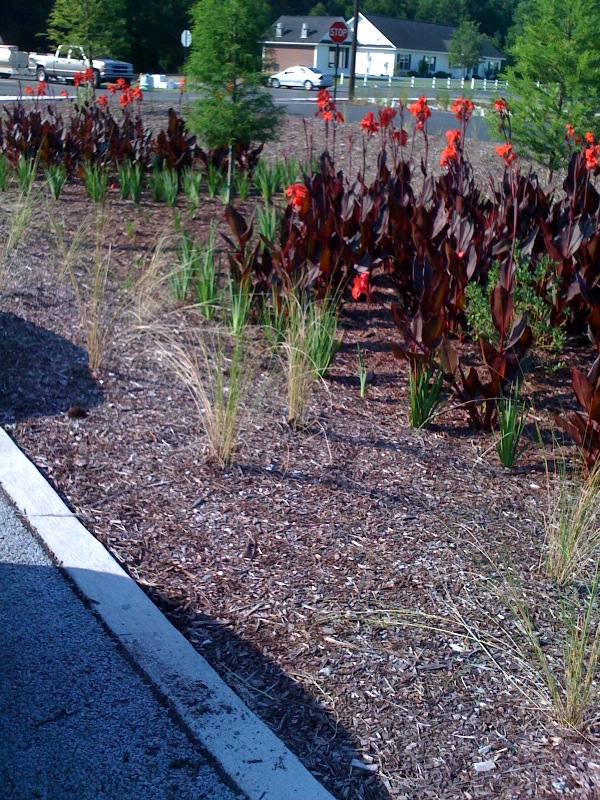
The new Richmond Hill City Center is the first LEED registered facility in Bryan County and is designed to support the local and regional community. For more information please visit www.richmondhillcitycenter.com.
UGA Marine Extension Brunswick Research and Outreach Center
UGA MAREX completed building and landscaping upgrades for its Coastal Energy & CoastScapes Conservation Landscaping Demonstration Facility designed to improve energy efficiency and generation, reduce stormwater runoff, and introduce naive plants as a practical alternative for coastal landscaping. Energy improvements include an advanced programmable geothermal heating and air system triggered by both temperature and humidity; twelve - 216 watt SHARP PV solar array modules mounted on two Zomeworks passive trackers; a SolarAide Collector/Rheem Indirect Solar Hot Water System; 30 new Energy Efficient Windows; and replacement of all fluorescent lighting fixtures with cooler more energy efficient ballasts and bulbs. A Honeywell Windtronics low speed wind turbine will also be installed.
The facility includes permeable pavement, rain gardens, a 500-gallon underground rain harvesting system, reforestation/re-vegetation, and soil restoration. Eighty-seven diverse coastal plain native plant species, including more than 500 individual plants, were installed in the demonstration native plant gardens on the station grounds. Garden types include Salt Tolerant Garden, Drought Tolerant Garden, Wildlife Habitat Garden, Native Grasses Garden, Rain Garden, Natural Shade Garden, Native Vines Garden, and a Native Alternatives Garden.
Sustainable Fellwood – LEED ND Certified Affordable Housing Development
Sustainable Fellwood is a LEED Neighborhood Development (ND). It is comprised of a mixed-use, mixed income development of 220 Housing Units on the former Fellwood Homes site in Savannah, Georgia. Phase I is fully occupied and includes 110 affordable housing units featuring 11 LEED GOLD certified buildings in a registered Earthcraft community and LEED neighborhood. Phase II construction began in September 2010 and will include another 110 affordable housing units. Five of the 13 single family for sale homes have been constructed and are occupied. Phase III construction for a senior housing apartment building with solar panels began in December 2010 and will include 100 units. Approximately 45,000 square feet are available for commercial development. For more information please visit the website at https://fellwood2.wodagroup.com/.
Abercorn Commons – LEED Certified Retail Center
Abercorn Common is the country's first all-retail LEED Core & Shell project. It received LEED Silver certification in 2006, and features the first LEED McDonald's. Some of the sustainability features at this site include a cistern which collects rainwater from the roofs of the shopping center to be used for irrigation; a highly reflective white roof to keep the center cooler; porous pavement in the parking lot to reduce flooding and allow stormwater to drain naturally; onsite recycling; a green roof; and over 85% of construction material was kept out of the landfill through recycling or reuse.
